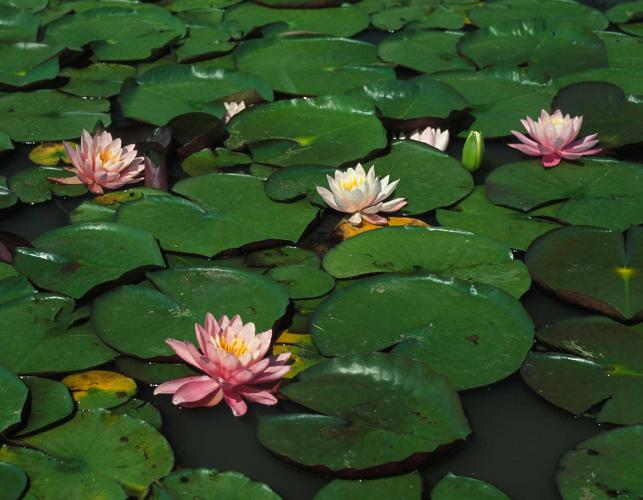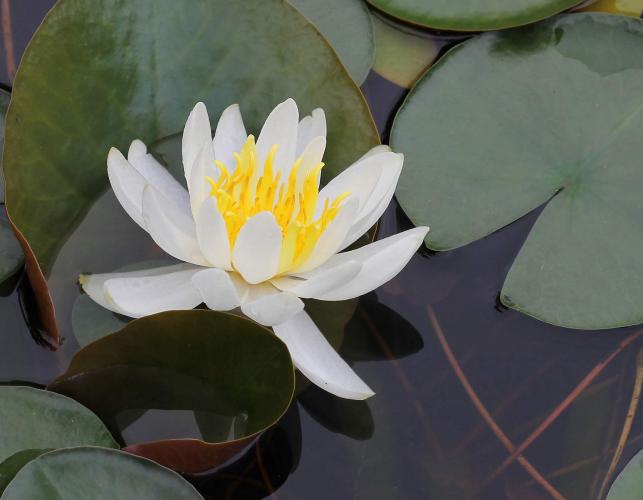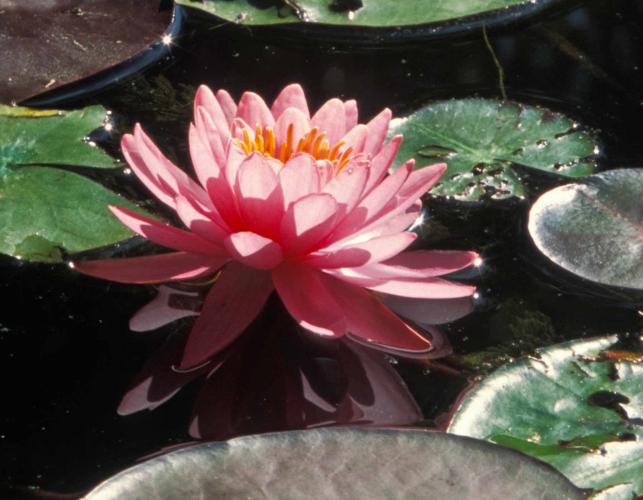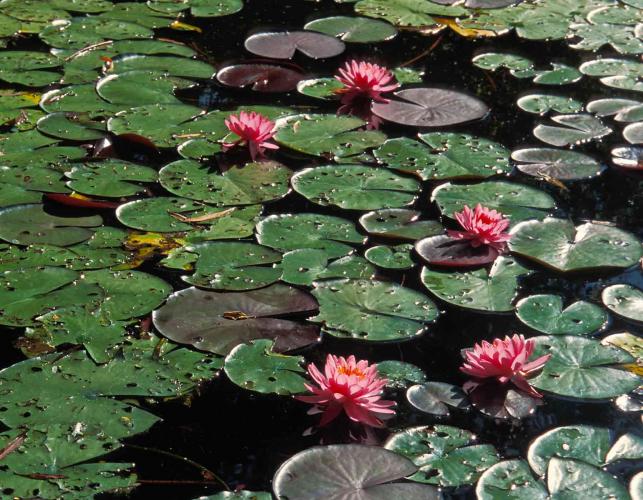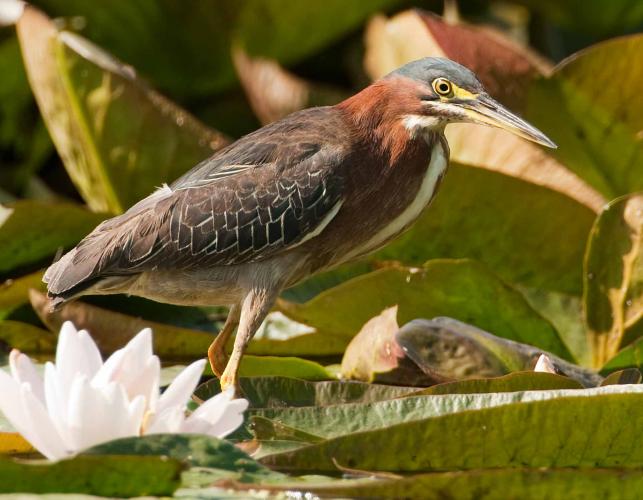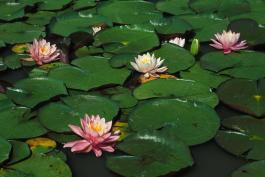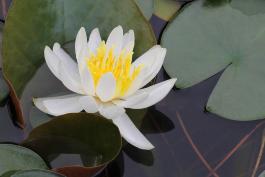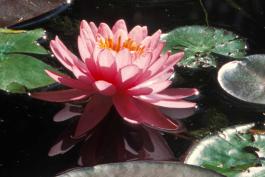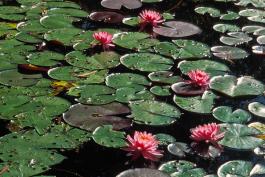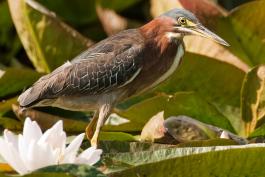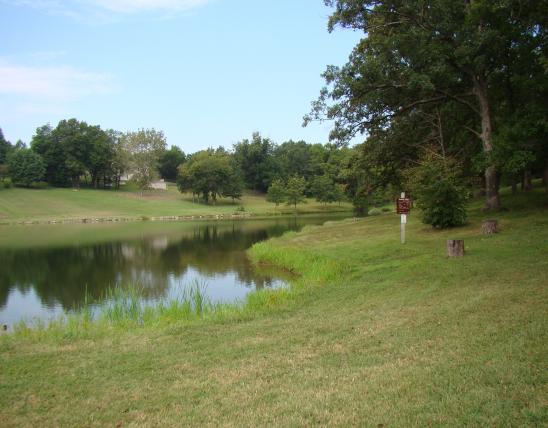City of Taos
Tom Wieberg, Park Director,at 573-619-7043 or email parks@cityoftaos.org


































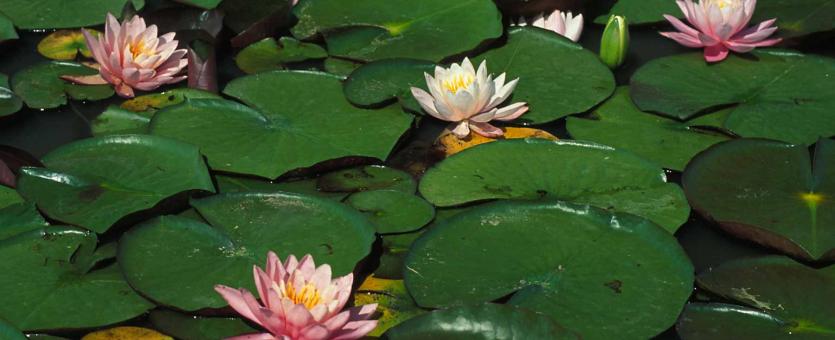
Water lilies have large, round leaves 8–16 inches across, each with a single V-shaped notch, and each with its own stalk. The leaves may be floating, elevated above the water surface, or submerged, depending on water level fluctuations. The large, showy flowers have many petals that are typically white to pink to violet; the center is often yellow. Blooms July–October. Leaves and flowers are attached to flexible underwater stalks that rise from thick, woody rhizomes (modified underground stems) on the pond or lake bottom.
Similar species: American lotus (Nelumbo lutea) has yellow to cream-colored flowers with a large central disk that resembles a showerhead. The leaves do not have a cleft. Spatterdock (Nuphar advena) has deep yellow, saucer- or globe-shaped flowers and oval or heart-shaped leaves, which are cleft.
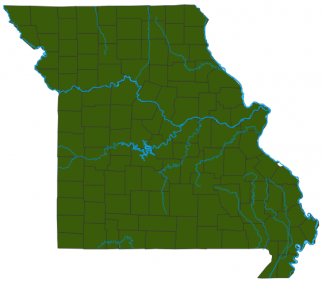
Statewide.
Ponds and slow-moving streams, in water up to about 8 feet deep. One species, white (fragrant) water lily (N. odorata), is a native perennial plant that occurs in our state without cultivation; it is also widely cultivated.
Water lilies are among the most beautiful of all water plants and are extensively cultivated. Many water lily hybrids and color forms are available for aquatic gardening, with some hardy and others requiring much maintenance. The Missouri Botanical Garden in St. Louis displays many lovely hybrids.
Water lilies may grow too rapidly and become a nuisance in some ponds.
The undersides of the floating leaves are nurseries for many aquatic insects and snails and thus provide food and shelter for small fish and others.
Many bees, flies, and beetles visit the flowers. The flowers have an interesting blooming biology involving the timing of flowers opening and closing, availability of nectar and pollen, and changing shapes of floral structures as the flower ages.
